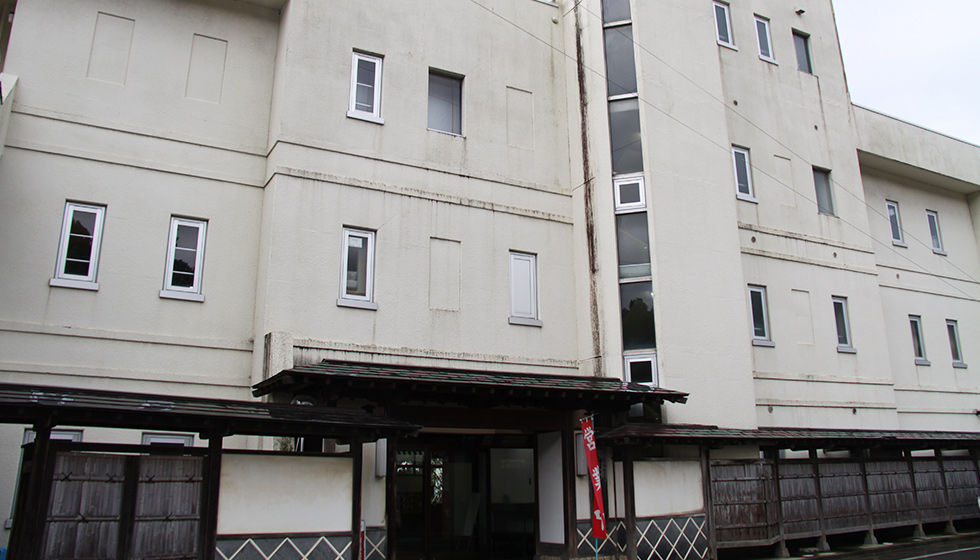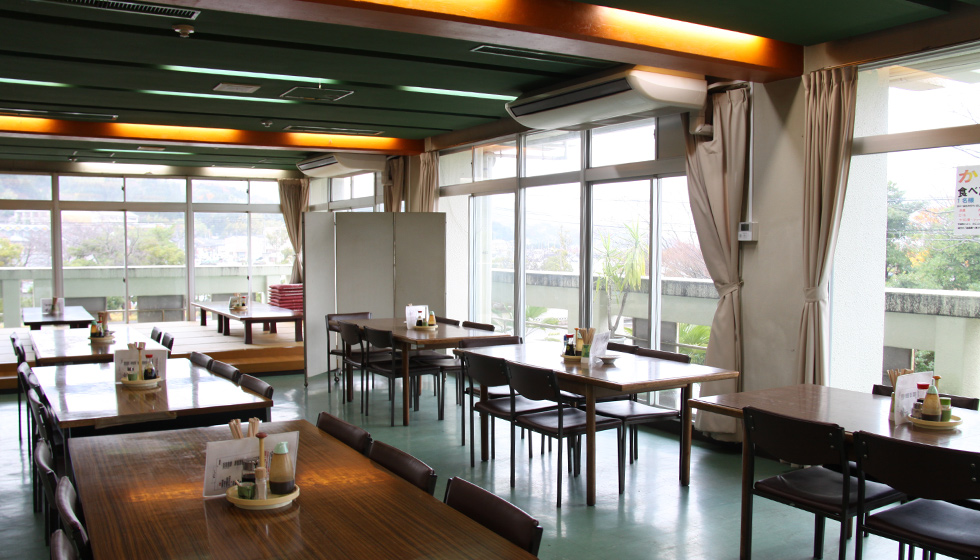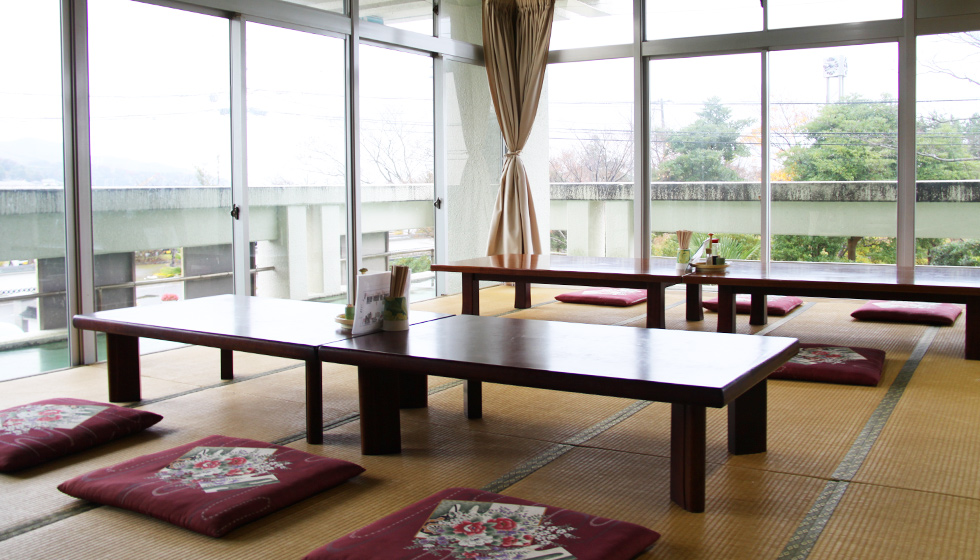- Akadomari Tourist Centre
Akadomari Tourist Centre
Facility Basic Information
- Address
- 2206-3 Akadomari, Sado, Niigata 952-0711
- TEL
- 0259-87-3121
- Payment Methods
- Credit cards not accepted
- Assistance in Foreign Languages
-
No
- Internet
- Not Available
- General Accessibility
- Not Available
- Pets
- No
- Transport Access
- Akadomari Port Approx 1 minute by car
- Nearest bus stop
- Akadomari Futoumae (Akadomarisen Line, Maehama Line) Approx. 0 minutes on foot from bus stop
- Parking
- 10
- Opening Times
- 9:00 - 18:00
- Closed
- Closed Wednesdays (and occasionally on other days)
- Number of rooms
-
Japanese-style room:6
- Business Period
- Open all year
- En-suite bathroom
- Not Available
- Opening Times
- 10:30 - 18:00
- Regular holiday
- Closed Wednesdays (and occasionally on other days)
- Number of seats
-
60
- Reservation
-
Not required
Booking is required for the all-you-can-eat-crab plan.
- Conditions
- Open for lunch, Private dining room available
Nearby Spots
-
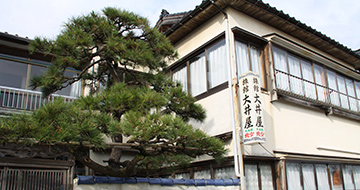 Ryokan (Japanese-style Inn)
Ryokan (Japanese-style Inn)Oiya Ryokan
Oiya Ryokan is just 5-minutes on foot from Sado Kisen Akadomari Ferry Terminal. Frank and chatty Okami (the female manager) will give you a warm welcome. With 300-year-old pine trees, a skylight on the ceiling, and amber-colored corridors, traditions are kept alive here and there in this wooden-structured inn built in the Taisho Period (1912-1926). Oiya Ryokan is an inn which puts passion into its meals. Dishes prepared with shrimps and crabs caught in Akadomari are the main reason for its popularity.
-
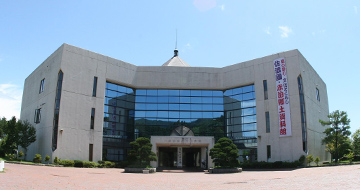 Museums, Art Galleries and Resource Centres
Museums, Art Galleries and Resource CentresAkadomari Folk Museum
Akadomari Folk Museum is housed in the Akadomari Sogo Bunka Kaikan (Cultural Centre). You will be welcomed by a parade float called the "Odori Yatai (literally: dance float)", which imitates a festival. The 1st exhibition room introduces festivals from all over Sado, such as deity mask dance. In the 2nd exhibition room, folk materials collected from the Akadomari area will give you insight into the history of the villagers' struggles. There is a special section featuring Kaitaro Hasegawa, a native of Akadomari who was a very active novelist under three pen names: Fubo Hayashi, Itsuma Maki, and Joji Tani.
-
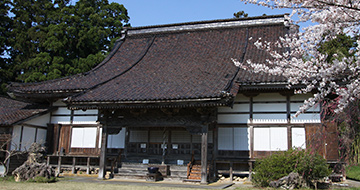 Shrines and Buddhist Temples
Shrines and Buddhist TemplesZenchoji Temple
A walk up the gentle slope, with Akadomari Port in the background, will lead to Zenchoji Temple on the heights, a temple of the Shingon School. It was reputedly founded circa 827. Once every thirty-three years, the main image of the temple, the Shokanzeonbosatsu (Aryavalokitesvara) statue is revealed, which is a lost-wax casting work of the first generation of Rando Miyata. Zenchoji is known as the temporary residence of Tamekane Kyogoku (a court noble) for six years, and in connection with his long-aspired return to Kyoto in 1303, the hidden statue at the upper temple has been worshipped in the name of Kikyo ("coming-home") Kannon. In addition, Mahori Hogan Yoshitaka, a master painter, donated a painting entitled "Kyogoku Bishamonten (Vessavaṇa)". Zenchoji Temple is one of the temples on Sado's Seven Gods of Fortune pilgrimage route. Bishamonten is a god with wisdom and valor, as well as, a god of treasure and happiness, and has been steadfastly worshipped to this day.
-
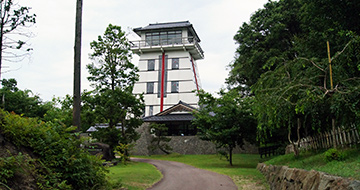 Museums, Art Galleries and Resource Centres Heritage and Relics
Museums, Art Galleries and Resource Centres Heritage and RelicsShironoyama Park
Perched on a hill projecting out into the port, the ruins of the castle built by a castle lord in the late 16th century have been converted into a park for the public. The observation tower serves as an exhibition hall for Akadomari's many folk tales, and bronze sculptures depicting scenes from the stories are on display on each floor. Enjoy a panoramic view in 360 degrees: from the lush mountains behind to Akadomari Port right down the hill, and the Echigo mountain range across the sea.
Stores where you can eat and drink nearby
-
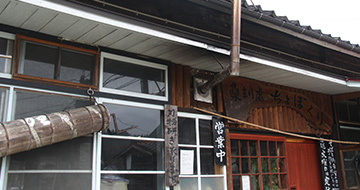 Casual Eatery Soba (buckwheat) and Udon Noodles
Casual Eatery Soba (buckwheat) and Udon NoodlesChobokuri
In Hamochi, "Osaki Soba no Kai" takes place several times a year, where you can enjoy local specialty dishes and hand-kneaded soba (buckwheat noodles), as well as traditional performing arts, attracting many fans throughout Japan. Chobokuri was opened in 2007 by the organising group of Osaki Soba no Kai. Here you can have a simple, but delightful treat of soba noodles made from 100% stone-ground buckwheat all year round. Seeking soba noodles soaked in flying fish based broth, soba lovers visit Chobokuri both from within and beyond Sado. The interior of a quaint Japanese-style house is also a highlight of Chobokuri. The restaurant's name derives from a traditional performing art in the Osaki area, which is performed at Osaki Soba no Kai.
-
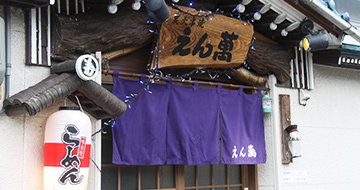 Casual Eatery Izakaya (Japanese-style pub) Grilled Skewers/Yakitori/Chargrill Chinese Ramen Noodles
Casual Eatery Izakaya (Japanese-style pub) Grilled Skewers/Yakitori/Chargrill Chinese Ramen NoodlesChargrilled Skewers Enman
The Enman restaurant specialises in chargrilled skewers, expressing their passion and determination towards handmade dishes. Using the brand-name chicken "Koshi no Tori" sourced from Niigata, the chef threads the chicken onto skewers one by one. Grilled at a high temperature over charcoal, the skewers are flavourful and taste excellent even when cold, making them a popular takeaway meal. Their Chinese ramen noodles are served with housemade chicken bone broth. Enman also serves à la carte dishes and chef's choice menus.
-
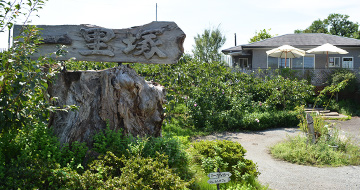 Tea House/Coffee Shop Italian Cuisine Japanese-style Curry with Rice Sweets
Tea House/Coffee Shop Italian Cuisine Japanese-style Curry with Rice SweetsPoteau Indicateur
Surrounded by persimmon trees, the farmhouse café "Pouteau Indicateur" stands in the Hamochi Murayama area. You can use the ichirizuka to find the cafe, an old Japanese version of a milestone, the only one still in existence on the Aikawa and Ogi road. The menu items are all hand-made, using home-grown vegetables and fruits. The top reccommendations are pasta and curry with rice. Beef curry is made from the famous Sado Beef. All dishes are served with a fresh salad. Desserts which fully express the taste of the season are also popular. The name "Pouteau Indicateur" means signpost/milestone in French.
